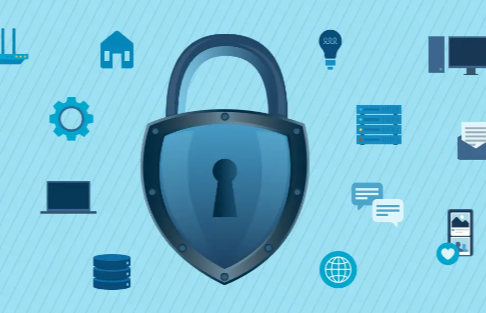From Vulnerable to Vigilant: Tips for Protecting Your Internet of Things

Key Takeaways:
- Comprehend IoT-related risks and the need for vigilant security measures.
- Implement robust security protocols and maintain regular network hygiene.
- Understand the significance of network segmentation and real-time monitoring.
- Stay informed about current IoT security policies and new threat landscapes.
- Invest in your security infrastructure and assess its effectiveness consistently.
Table of Contents:
- Understanding the Risks of IoT Devices
- Establishing a Secure Framework for Your IoT Network
- The Role of Passwords and User Authentication
- Advantages of Network Segmentation
- Monitoring and Responding to Threats
- IoT Security Policies and Regulations
- Investing in the Right IoT Security Tools
- Regular Security Audits and Vulnerability Assessments
- Educating Users and Stakeholders on IoT Security
- Future-Proofing: Staying Ahead of Emerging IoT Threats
Understanding the Risks of IoT Devices
The proliferation of IoT devices has catapulted society into a new era of everyday efficiency and automation. Yet, these devices form the frontier of an ongoing battle against cyber invaders. The risks of IoT devices have been underscored by incidents such as the Fortinet hack, where vulnerabilities were exploited to disrupt the entirety of a network.
Devices, when compromised, can enable unauthorized access to personal and professional networks, lead to substantial data breaches, or even allow attackers to hijack devices for their nefarious aims, such as participating in Distributed Denial of Service (DDoS) attacks.
These vulnerabilities carry a significant weight, particularly with personal devices that gather sensitive data such as geolocation, biometrics, and personal habits.
Establishing a Secure Framework for Your IoT Network
A secure and comprehensive framework is essential for constructing a shield against potential cyber threats. This structure must consolidate various security aspects, starting with robust protocols such as end-to-end encryption and secure boot mechanisms. Encryption secures communication between devices and ensures that data stored on the devices remains inaccessible to unauthorized users.
Additionally, implementing secure and unique identifiers for devices within your network can prevent imposters from gaining entry.
Ensuring consistent device and software updates also plays a critical role in keeping your IoT network secure. Manufacturers often provide updates that patch previously unknown vulnerabilities, effectively closing windows of opportunity for cyber attackers. It is advisable to automate update processes where possible and verify the integrity of updates to avoid introducing malware into your system through falsified updates. This reinforces the importance of accurate source verification and secure transmission paths for these updates.
See Also: Optimizing Efficiency in the Life Sciences Sector Through Advanced Compliance Software
The Role of Passwords and User Authentication
Passwords should not be an afterthought regarding IoT security; they are a fundamental pillar. Implementing complex passwords and changing them periodically forms a simple and effective barrier. Going beyond basic passwords, utilizing multi-factor authentication (MFA) adds layers to security, combining something the user knows (a password), something they have (a smartphone or token), or something they are (biometrics).
User authentication protocols need to be robust but also managed competently. Assigning user roles and monitoring access can ensure that those within the network have only the rights necessary to perform their functions—this means that if credentials are compromised, the potential damage is limited.
Advantages of Network Segmentation
Network segmentation espouses the principle of limited exposure—by creating distinct zones within the network, a compromised device in one segment is less likely to affect other segments. Home networks can benefit by keeping guest devices isolated from main devices. At the same time, businesses can take this further by segregating operational departments and safeguarding sensitive information even within the corporate firewall.
Getting network segmentation right involves technical knowledge and often an initial investment in more advanced networking hardware or software. However, the peace of mind that comes from knowing a single breach won’t devastate your entire network is immeasurable.
Moreover, segmentation also enhances the network’s performance by reducing congestion and enabling finer control over traffic, which can reveal unusual activity that might indicate a security issue.
Monitoring and Responding to Threats
Vigilance is pivotal in IoT security, where threats continuously evolve, and systems persistently probed for weaknesses. Implementing a solid strategy for real-time monitoring allows for immediate awareness and mitigation of threats.
A cohesive strategy encompasses detecting threats and preparing personnel for a prompt and effective response. The protocols should consider the company’s specific scenarios and resources, and drills should be routinely conducted to ensure readiness. Your security framework is tested most when an attack occurs, and preparation can mean the difference between a quick recovery and a lasting setback.
IoT Security Policies and Regulations
As IoT continues to envelop our lives, regulatory bodies have responded with policies that aim to clamp down on lax security practices. Aligning with these legal parameters is not a mere compliance exercise—it’s a move that instills trust in customers and partners.
IoT regulations often prescribe minimum standards for device security, which can serve as a reliable baseline for your security strategy. Staying current with these policies ensures that an organization is not caught off guard by regulatory changes that could affect operations or legal standing.
Investing in the Right IoT Security Tools
Selecting the appropriate tools to guard against IoT security risks is fundamental in erecting defenses for your network ecosystem. The IoT security market offers myriad solutions that cater to varied needs—from antivirus software to intrusion detection systems (IDS) and beyond.
Assessing these options requires closely examining your network’s scale, complexity, and potential threat vectors. Making such choices intentionally and with foresight can result in a durable, defense-capable system.
This investment, however, should be ongoing rather than one-off. Cyber threats continuously evolve, taking new forms and adapting older strategies to bypass security measures.
Educating Users and Stakeholders on IoT Security
Educating those interacting with the IoT network is fundamental to any holistic security strategy. Cybersecurity awareness training aims to arm users with the knowledge to recognize potential threats and respond appropriately.
Regular updates about new phishing tactics, the importance of software updates, and the ramifications of weak passwords can empower users to become active participants in the network’s security.
Committing to a schedule of training sessions and updates solidifies a company’s security culture. This dedication trickles down to each individual, enabling them to respond swiftly and confidently when faced with potential security challenges.
Future-Proofing: Staying Ahead of Emerging IoT Threats
No security guide would be complete without addressing the future. In the cyberspace race, being proactive is better than reactive. Anticipating future IoT threats requires vigilance, adaptability, and continuous learning. Maintaining a forward-looking perspective encourages the adoption of new security measures when necessary. It affords organizations the privilege of agility in the face of new threats. Participating in security communities, keeping up with thought leaders, and attending industry conferences provide insight into future challenges within the IoT security space.




